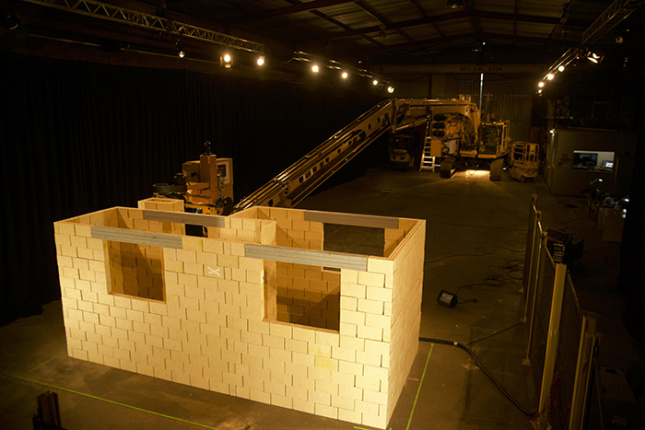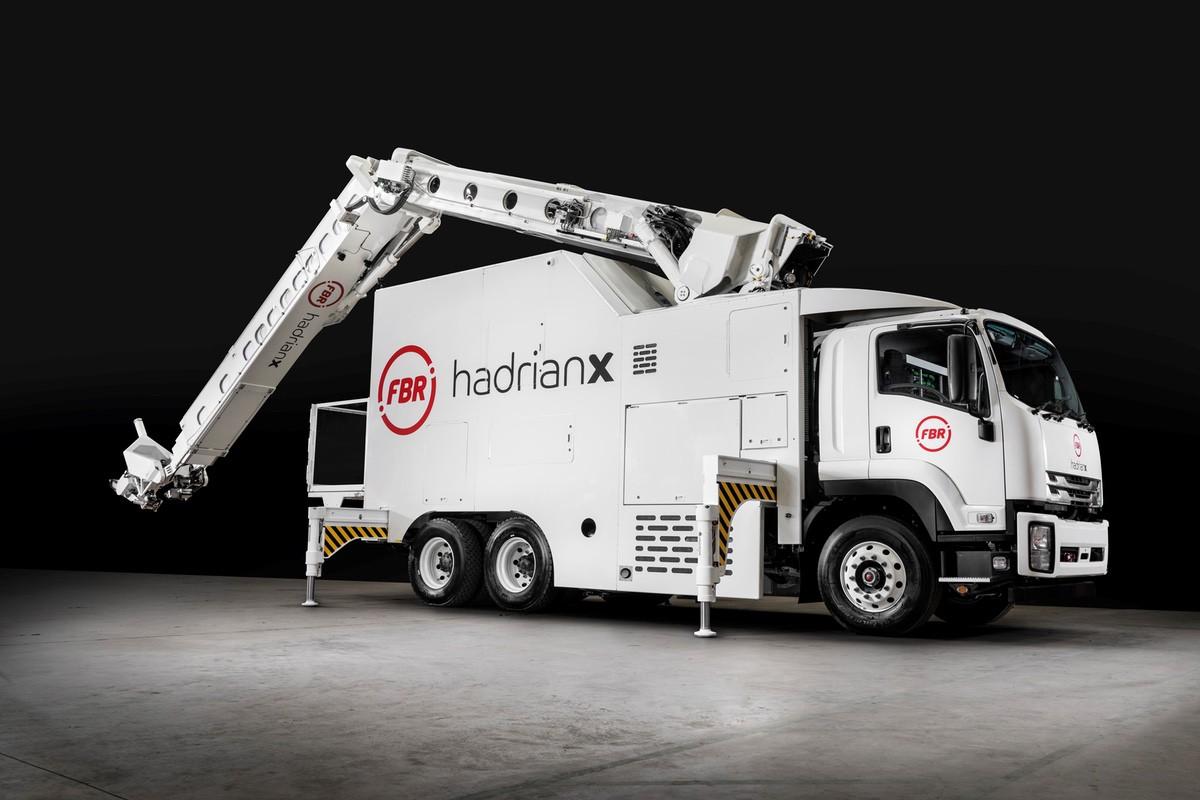Buzz around robotics in architecture has been steadily building for some time now, though it’s only in the last few years that the technology has seen much real-world action. However, robotic construction technology is seemingly one step closer to the commercial market as Australian company FBR has unveiled plans to bring its robotic bricklaying arm, Hadrian X, out of the testing facility and into the real world.
Earlier versions of the Hadrian, which shares the name of the Roman emperor perhaps most famous for his namesake wall that stretched across what is now the United Kingdom, had successfully created buildings in closed environments as early as 2015. This past November, the latest version built a nearly 2,000-square-foot, three-bed, two-bath home in a lab in under three days. After this success, FBR is attempting to take the robot out into the wild, with plans to build ten homes this year.

Being billed as “the world’s only fully automated, end-to-end bricklaying solution,” the 100-foot, truck-mounted arm is able to lay as many as 1,000 bricks in a single hour without changing position. It interprets CAD files, calculating required materials on its own, before setting out to make the digital plans a reality.
According to a blog post from January 11, FBR has begun preparatory work, including adding additional sensing equipment for weather conditions and the like, for the Hadrian X’s first outdoor build, a three-bedroom home that will be even more complex than the structure built in the last indoor test. Rather than aiming for speed, FBR sees this first build as a chance to “gather as much intel as possible,” in order to make any necessary engineering adjustments and to prepare to launch its autonomous bricklayer for commercial construction use—a business in which the company says there is an “immense” demand for automation. Hoping to make building safer, faster, and less wasteful, CEO Mike Pivac believes that there’s “massive potential for [autonomous building] technology…to shape the way the construction industry operates in the future.”
